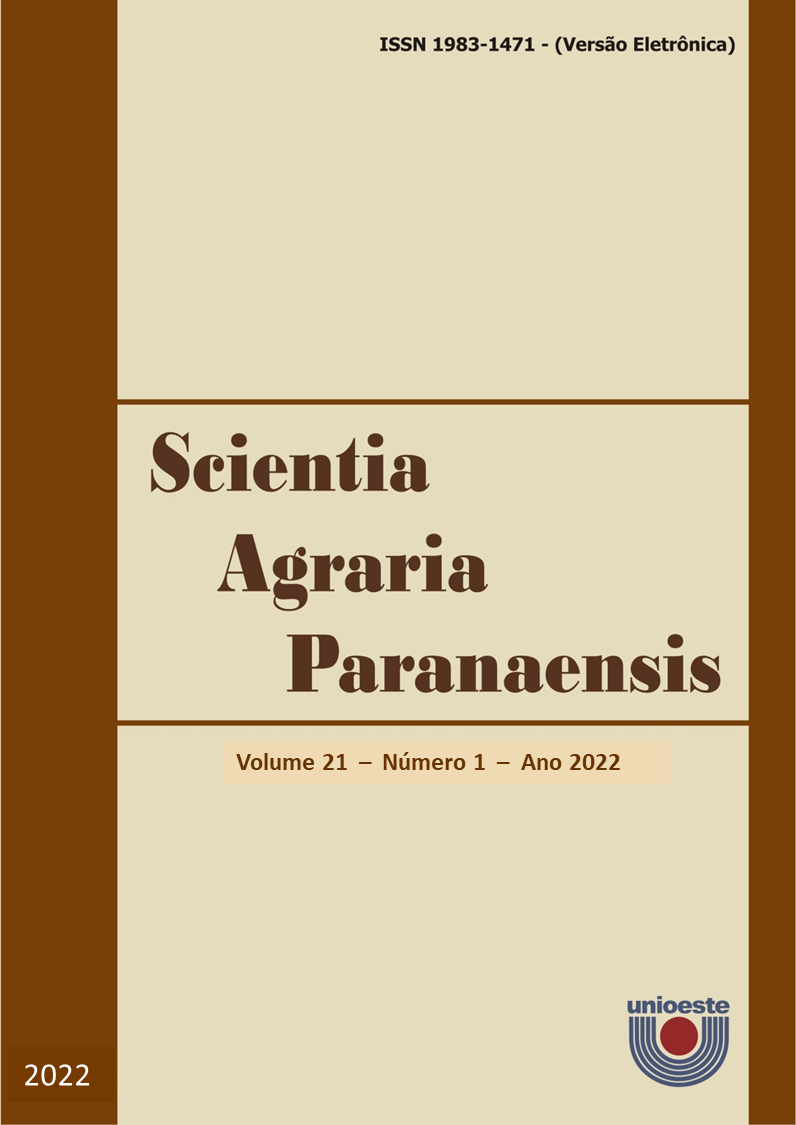Hybrid progenies of Bahiagrass: agronomic evaluation
DOI:
https://doi.org/10.18188/sap.v21i1.29282Resumo
Paspalum notatum Flügge is one native forage grasses of southern Brazil. Through intraspecific hybridization, is possible generating progenies with variability for agronomic traits. The objective of this work was to evaluate 24 hybrids and select them for the superior agronomic traits, as well analyze correlations between forage traits that can assist in the selection of genotypes.The hybrids were obtained from crosses among sexual and apomictic clones, and were vegetative propagated in a greenhouse until the transplant to the field. The agronomic traits evaluated were: total green mass (TGM), leaf dry mass (LDM), stem dry mass (SDM), inflorescence dry mass (IDM), dead mass (DeM), total dry mass (TDM), growth habit (GH). Correlations between plant diameter (PD), number of tillers (NT), total dry matter (TDM), plant height (PH), total green matter (TGM), leaf dry matter (LDM), stem dry mass (SDM), number of inflorescences (NINF) and inflorescence dry matter (IDM) were performed using the Pearson correlation coefficient. The hybrids had great variability in all agronomic characteristics measured. Based on the three years of evaluation, hybrids KD9, KF1, KF4, and KD5 produced higher total dry mass than other genotypes. The hybrid KF4 too had greater LDM; KF1 and KF4 were the colder tolerant. These genotypes were selected for evaluations, such as seed production, fertilizer use efficiency, animal performance, and for new crosses. The high correlation of the total dry mass with the other forage components will be useful for indirect select criteria in bahiagrass improving strategies.
Downloads
Publicado
Como Citar
Edição
Seção
Licença
Aviso de Direito Autoral Creative Commons
Política para Periódicos de Acesso Livre
Autores que publicam nesta revista concordam com os seguintes termos:
1. Autores mantém os direitos autorais e concedem à revista o direito de primeira publicação, com o trabalho simultaneamente licenciado sob a Licença Creative Commons Attribution que permite o compartilhamento do trabalho com reconhecimento da autoria e publicação inicial nesta revista.2. Autores têm autorização para assumir contratos adicionais separadamente, para distribuição não-exclusiva da versão do trabalho publicada nesta revista (ex.: publicar em repositório institucional ou como capítulo de livro), com reconhecimento de autoria e publicação inicial nesta revista.
3. Autores têm permissão e são estimulados a publicar e distribuir seu trabalho online (ex.: em repositórios institucionais ou na sua página pessoal) a qualquer ponto antes ou durante o processo editorial, já que isso pode gerar alterações produtivas, bem como aumentar o impacto e a citação do trabalho publicado (Veja O Efeito do Acesso Livre).
Licença Creative Commons
Esta obra está licenciada com uma Licença Creative Commons Atribuição-NãoComercial-CompartilhaIgual 4.0 Internacional, o que permite compartilhar, copiar, distribuir, exibir, reproduzir, a totalidade ou partes desde que não tenha objetivo comercial e sejam citados os autores e a fonte.


